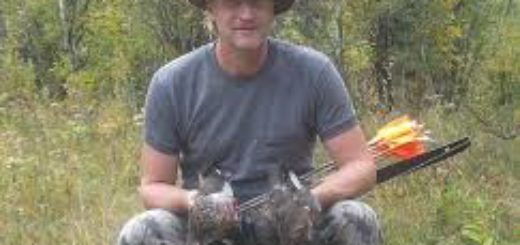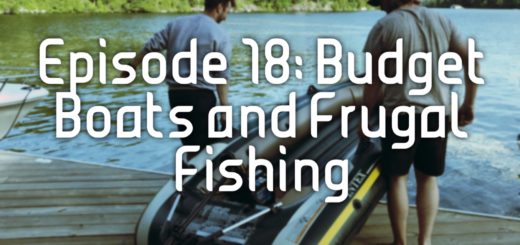Spring Turkey Hunting Tips
With this year’s turkey season almost over, we have a few turkey hunting tips distilled from this year’s failures and successes.
Tip #1: Scout, scout, scout
And when you’re done; scout some more. Scouting is a huge part of hunting success, no matter what species you’re pursuing. Kevin Bartley emphasized its importance to the turkey hunter was when he appeared on our recent podcast. This year, with access to a new farm to hunt, it was crucial for us to scout before the season.
This can be a tall order for an urban-based hunter. We just don’t have the luxury of driving a few minutes to our hunting spots to keep an eye on them. We contented ourselves with a three-step approach to make up for the difficulty of making multiple visits.
First, we walked most of the property during the day, in advance of the season, and while the snow was still on the ground. This took a few hours, but allowed us to determine the paths of travel the turkeys were taking and to take note of some key features (see Tip #2, below).
Second, we relied heavily on intel from the farmer. She told us about where she’d seen turkeys and at what times of day, and continued to update us by text message.
Third, we used our first sit as an opportunity to scout. Four of us divided into three groups, one pair and two singles, to cover the three major areas where we had seen tracks in the snow. Early season activity is not necessarily representative. We wanted to learn more key info on that first morning. And we did. See the next tip.
Tip #2: Keep track of what you learn
I highly recommend using a notebook or your phone to jot down notes. Use these notes to annotate a map after you scout. You can either draw out the property or, even better, use one of the various apps available to annotate a satellite image of the place you’ll be hunting. If you have a tablet, for example, you can pull an image from google maps and annotate it using another app like Adobe Sketch or Paper. We’ll give more detail on useful hunting apps and how to use them in another post.
You don’t need to go all high tech though. An annotated map might look something like the one below, which I sketched out for the farm we hunted this year. The blue writing represents some key things we saw on our pre-season scout.

Turkey Scouting Map
It is easy to think you’ll remember every little thing you saw on a scouting trip or on a morning sit. You won’t. Better to keep notes.
This year, with multiple guys, we also learned a ton on the first the morning including possible tom roosting locations, rough turkey numbers, and roughly where the toms and jakes were meeting up with the hens. Liam and Chad spotted them on the first morning but couldn’t get close enough without busting them. This allowed us to further annotate the map with lots of new important information. That new information is the red text on the map This leads straight into tip #3.
Tip #3: Don’t be afraid to split up
Hunting turkeys as a pair can be very effective, especially if one of you is a good caller and can set up further behind the other person, who acts as designated shooter. However, with imperfect information (and so long as you are careful and quiet), splitting up can significantly improve your odds of success.
This year Chad and I missed out on a potential opportunity for one of us to get a shot at two toms because we decided to sit together in different parts of the same field. This was Field #1, on the above map. The turkeys flew down into Field #2 instead. While we sneaked close and watched the turkeys from the road, just out of gun range, we were pinned down and unable to get close enough.
Had we split up, it is likely that one of us would have had a shot. The next weekend, having learned our lesson, Liam and I split up between the two fields. The turkeys flew down into Field #1, the field Chad and I had set up in the last time, and Liam dropped a very nice, mature Tom. Had the birds repeated their previous behaviour, I would have had a shot in Field #2.
Tip #4: Go out hunting
Sounds dumb right? Well, I don’t know about you, but I rather dislike getting up at 3:30 A.M. It sucks. It especially sucks when you know it is pouring rain outside. Well, you don’t kill any turkeys in bed, unless your living situation is highly eccentric. The morning that Liam and I split up and successfully killed a tom was very unpleasant, with constant drizzle and cool temperatures. But we succeeded, and had a tom by 7:00 A.M. Pretty easy to shrug off the early morning wake-up when you’re reporting the kill to MNR over a hot coffee in a local diner.
Tip #5: Jake decoys work
A single hen decoy may well be the best all-purpose set-up, especially when you don’t know the lay of the land in an area. However, when you know the Toms are mature and are already accessing hens, a Jake decoy can excite the curiosity (and aggression) of an old tom. He may just come over to investigate. Both Liam and Mike Meusel killed turkeys this way, this season.
We hope you had a successful season, even if you didn’t bag a bird this year. Success does not necessarily mean killing a Turkey. Success means using your time in the field to learn your craft, learn about the animal you are pursuing, and enjoy the deep connection with nature that hunting brings. If you get a fine bird for the grill, so much the better.



